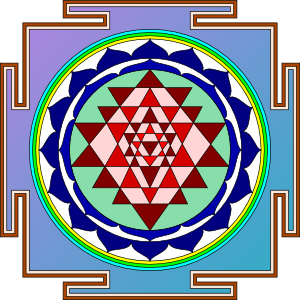|
|
|
|
Final Exams 2011 |
Susanne Allen
December 6, 2011
Western Culture Nipping at Traditional
Society
Dr. Whiteís Colonial and
Postcolonial Studies course isnít your grandmotherís basic western text course
where the philosophies of others are taught.
While studying the classics of philosophy is a privilege, the eye-opening
study of intertexuality as it pertains to colonial and postcolonial literature
is not only a privilegeóit
is also a life-changing experience. I now have a greater understanding of the
atrocities of racial tensions as it relates to the colonization of a second
country. The remnants of colonization are
seen as normal to younger generations as the parent-colonized generations pass
down newly learned traditions that quickly become embedded in the hearts and
minds of a country.
I was most amazed at how quickly
a country could be forced into submission, and how their native customs could so
easily be dissolved or become hybrid customs that barely resembled their former
meaning or ceremony. A good example of how
colonial influence is entrenched in the colonized people is in the movie
White Teeth. The father
symbolizes the mother county and has the power to unite or separate his family.
He selfishly chooses to divide his children to protect his own
indiscretions. The father covers up his personal mistakes by claiming that he
needs Millet to be a more devout Muslim. However, the father had not lived in
Bangladesh for decades, and obviously forgot that Bangladesh was in the throes
of major cultural rebellion. The fatherís
plan to re-educate Millet is never achieved; instead, western society becomes
Milletís model. He learns western ways to facilitate his radical Muslim
associations. This is a profound part of the movie because all of the fatherís
hopes and dreams are lost to the western world. Dawlat Yassin, in her 2007 final
post says, ďThere is no going back to a pre-colonial situation or regaining a
pre-colonial identity. Neither the colonizers nor the colonized culture are pure
anymore.Ē Simply put, there is no turning back.
There is a constant struggle between traditional cultures and the desire
for democratizations and modernizations.
Our studies highlighted the Americans ignorance to the larger world view of
postcolonial issues related to democratization and modernization.
All one has to do is look at the
New York Times best seller list, or
walk into Barnes and Noble to see that the literary world is a closed society of
modern day pulp fiction writers and biographies about western political figures
and movies stars. This literary slant is not a real representation of the world
as a whole and lends nothing to the need for a greater understanding of how
colonization has affected the ongoing process of democratization in these now
postcolonial countries.
The process of modernization uses the mechanisms of neocolonialism to transform
the underdeveloped country (Midterm). The process is complex, but it basically
means that more material possessions and more technology are a necessary and
preferred way of life. A good example of the process is
South Asia which is undergoing different stages of democratization and the
entire region is not passing through the same stage, and this phenomenon is
causing major cultural unrest because of religious and economic disparitiesóall
remnants of colonialism (Sharma 284 Research Post).
Of
all the books that we read I was most influenced by
Train to Pakistan.
I was one of the ignorant Americans who thought that the India was filled
with pacifists. Americans remain sublimely
retarded in their world view. Basically, if you can talk to someone on the phone
in India, isnít everything okay over there? Americans are limited in their
postcolonial world travels and rarely migrate to other countries to live;
therefore, the ignorance is not intentional, but innate. It was my own ignorance
that made the Train to Pakistan so
interesting. It caught my eye immediately in the opening pages. Singh sets the
record straight about the violence at the time of the Partition saying, ďMuslims
said the Hindus had planned and begun the killings, according to the Hindus, the
Muslims were to blame. The fact is, both sides killed. Both shot and stabbed and
speared and clubbed. Both tortured.Ē (1)
The colonial powers were gone and the country, divided, was now in its own
struggle to reclaim its identity. Is it a fear of colonial regression that
prompts a cultural war, or is it a fight for resources, beliefs, or just a state
of confusion? I am still not sure.
I felt somewhat helpless when I read the novels about Africa.
The violence described the Heart of
Darkness and the images seen in the video clip about King Leopold were
unimaginable. I think the title of the
novel is very appropriate. The colonizers
and the country found their darkest heart in colonization.
One of the most promising aspects of colonization is transnational
migration to the first country. In
Jasmine, she blossoms in the United States and Do also finds his way as a
Vietnamese transnational. The book ends
while they are young and I think this is on purpose to engage us as we wonder
what adventures they can produce as they grow old.
The Train to Pakistan was written over fifty years ago, but I felt as if it was
a contemporary novel. While these novels
are all fiction, they can easily be used as historical fiction, and they do help
students understand the context of social change and resistance to colonial and
postcolonial issues related to their countries.
My view of the world is forever changed due to the texts that we read.
I plan to continue my own study of interesting texts.
I want to be the person in the airport who isnít reading from the
New York Times best seller list.


